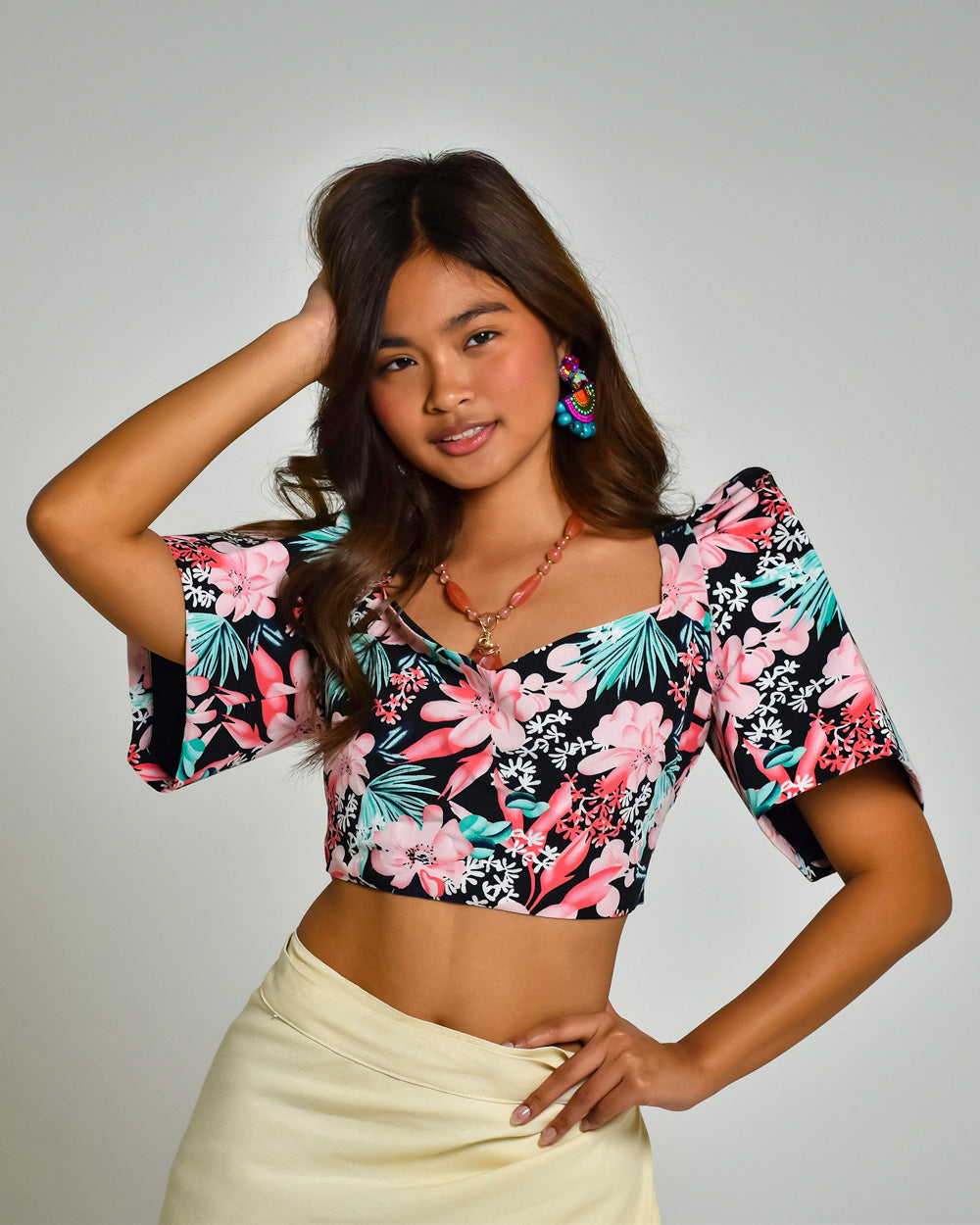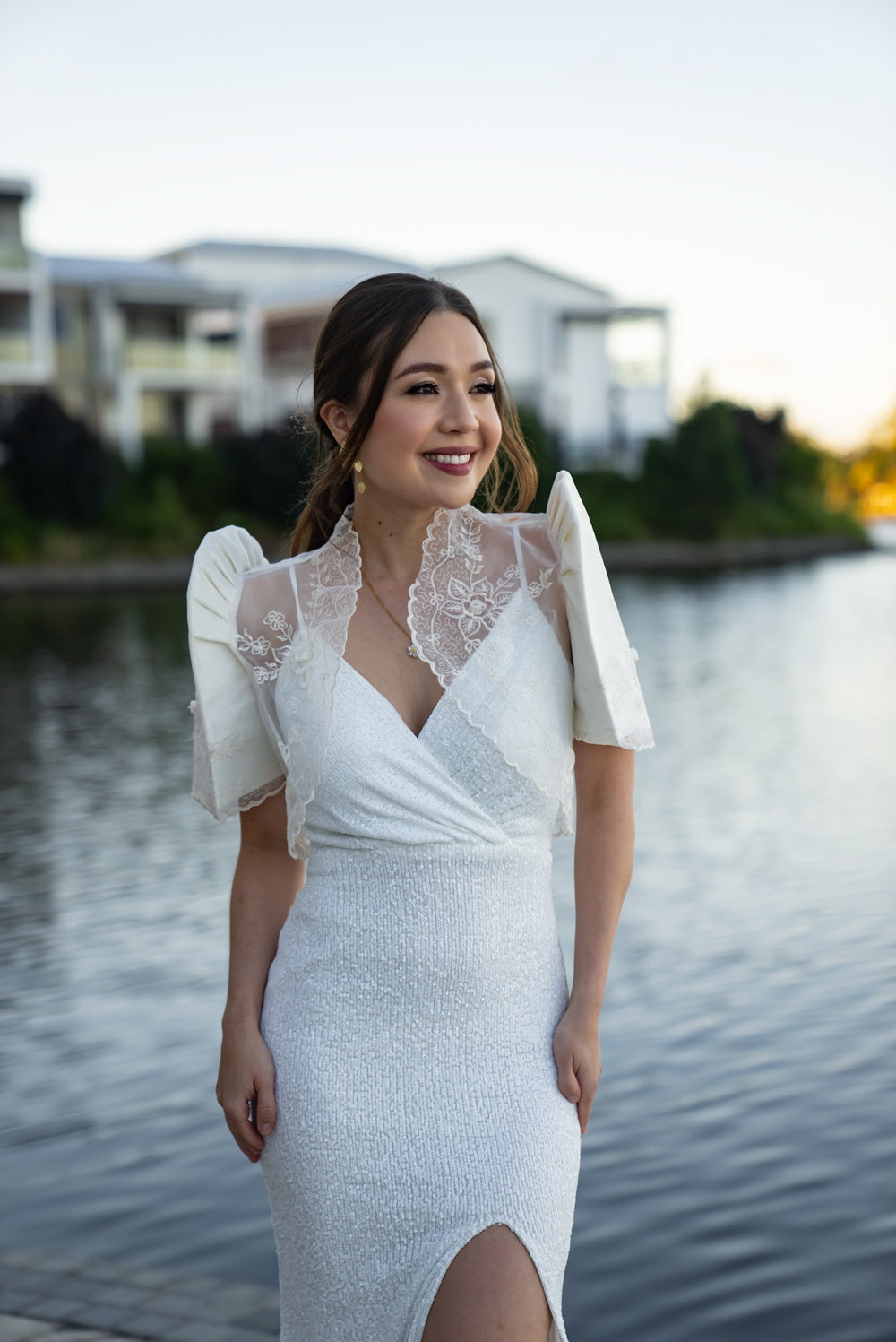It's easy to tell that Filipiniana fabrics are distinct from those more commonly utilised in the West. Despite their singularity, they come in a wide range of forms, from organic to man-made. Filipiniana clothing often features natural fibres like jusi, piña, silk, and even a blend of piña and cotton. Fabrics like chiffon, organza, and shantung are utilised to make synthetic ones. All manner of traditional Filipiniana garments are fashioned from these fabrics.
That said, there is a wide range of transparency, cost, quality, softness, thickness, etc., among these fabrics.
However, the wonderful individuality of the Filipiniana is always reflected in the materials used to manufacture them.
-
Chiffon
Synthetic chiffon is made from cotton and silk. Any colour can be achieved while dying chiffon, with the exception of the polyester variant. It is a type of fabric that is woven very plainly and appears to be very lightweight and see-through. The use of this fabric gives every Filipiniana dress the appearance of weightlessness.
-
Jusi
Traditional and exquisite in feel, jusi-made garments are typically less expensive. It is gentle to the touch, much more so than other natural fibres. Opaqueness is greatly increased in jusi-made garments compared to those created with piña.
A large number of people dig the jusi and piña style. In reality, this is achieved by employing the jusi fabric with narrow stripes to mimic the piña cloth. Another type of jusi is the monochromatic variety, which is just jusi fabric that has been hand-dyed, similar to the Luisa Mestiza Bolero in Burgundy, to create an ombre or gradient look from the top of a garment to the bottom.
-
Natural Fabrics
When we speak of "natural fabrics," we're referring to materials made from sources like plants and animals. Cotton, piña, and silk garments are all also included in this category. Clothes made from natural fabrics are often stiff, despite their low weight.
Sheer, translucent, or see-through garments can also be made from natural fabrics. They are used by several clothing brands that highlight the Filipiniana to preserve Philippine culture.
-
Piña
Piña fabric is spun using fibres extracted from pineapple leaves. The fibres are removed by hand and weaved on a loom in an elaborate manner.
Did you know that the custom of creating piña cloth is one of the Philippines' oldest sorts of craftwork? The most famous and oldest piña cloth makers may be found in the province of Aklan, Philippines. Piña fabric is also made in the provinces of Antique and Iloilo, both of which have gained international fame for their production of this distinctive material. Their piña weaving heritage has survived for almost a century!
Garments crafted from piña, like the ones used in Jade Barong Mestiza Dress in Piña, are considered heirlooms and investments due to the fabric's centuries-long history, difficulty in production, and extreme delicacy. Cocoon and silk are also commonly used to create Filipiniana clothing that resembles piña fabric.
-
Synthetic Fabrics
Now that you have a better understanding of the natural fibres employed in Filipiniana, you can move on to synthetic fibres. Basically, they are hand-made in factories. In most cases, they are made by a series of intricate chemical processes in a controlled laboratory setting. Fabrics like polyester, rayon, and similar materials are examples of synthetic fibres. Clothing made from them is more durable and long-lasting than that made from natural fibres.
Conclusion
Filipiniana fabrics are a unique and special textile produced in the Philippines. They are produced from various materials such as jusi, piña, and chiffon, and each type of fabric has its own unique characteristics. These fabrics are known for their durability, softness, and intricate designs. They are often used to create traditional clothing and accessories, as well as home decor and other items.
Overall, Filipiniana fabrics are a beautiful way to add a touch of Philippine culture to any item and are sure to be appreciated by all who come across them.
If you are looking for a great source of high-quality Filipiniana dresses, look no further than our amazing selections here at Mestiza Filipina. We are a curation of authentic Philippine dresses, barong Tagalog, boleros and more, designed to wear at events, weddings, at the office, or casually out and about! Check out our ‘Shop’ section for more of our Filipiniana and Modern Barong collections and their prices.










